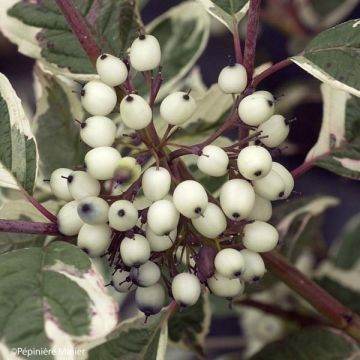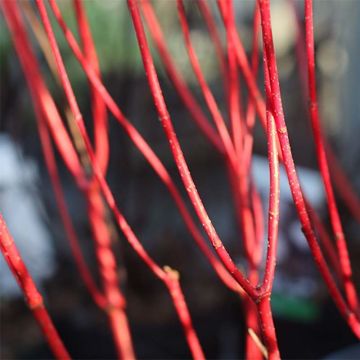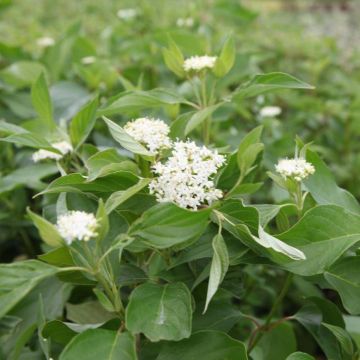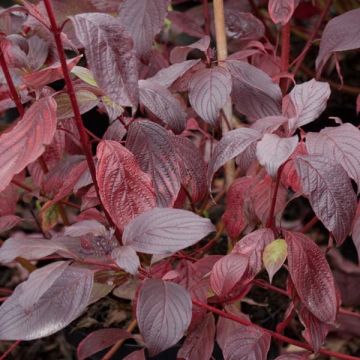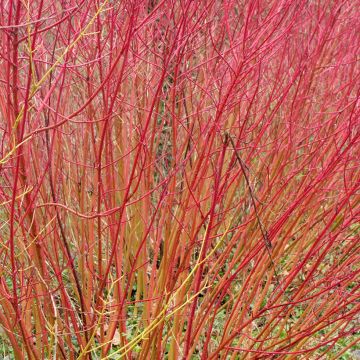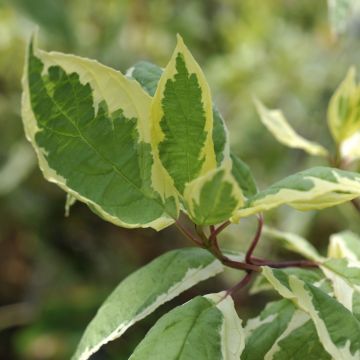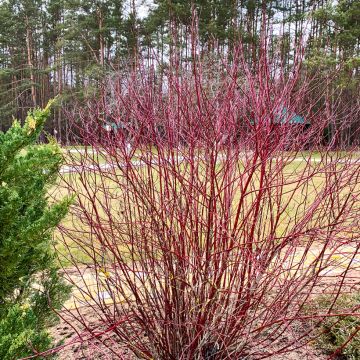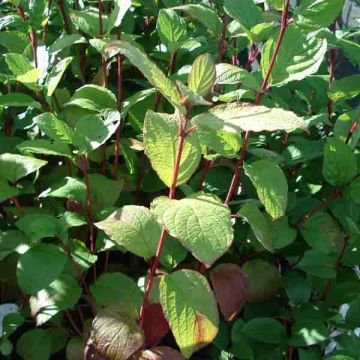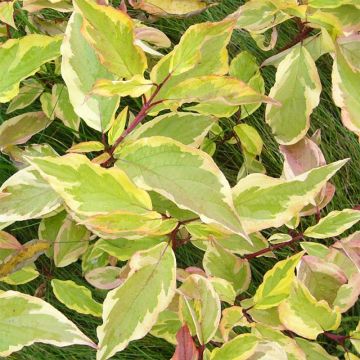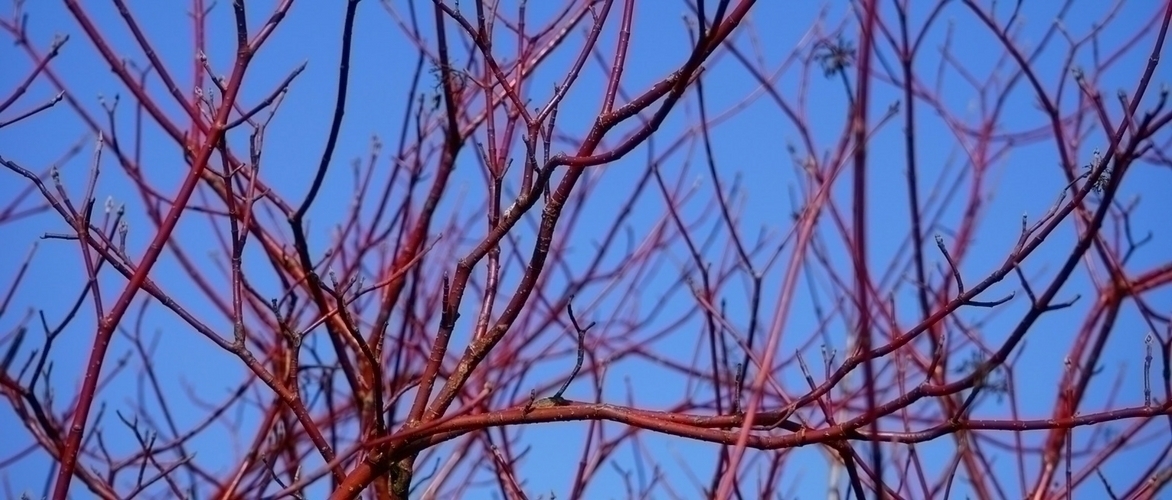
Pruning cornus to maintain their colours
When and how to prune dogwoods?
Contents
The dogwoods or Cornus with decorative wood are bushes valued for their winter brilliance, when their coloured branches illuminate the garden with bright and warm hues of red, orange, or yellow. In addition to adding a splash of colour during the coldest months, they are easy to maintain and perfectly suited for both small gardens and large spaces. To preserve the beauty of these bushes over the years, regular pruning is necessary. Discover all our tips on when and how to prune coloured wood dogwoods to ensure a stunning winter display!
Why prune decorative dogwoods?
Pruning decorative dogwoods is essential to preserve the brightness and vivid colour of their branches, which are their main attraction in winter. In varieties such as white dogwoods, bloodtwig dogwoods or stoloniferous dogwoods, only the new shoots of the year display bright colours, while older branches fade to brown or greyish hues, which attenuates their charm. Dogwoods are fast-growing bushes, making their pruning easy and effective: by cutting them back each year, you stimulate the continuous production of young, colourful branches. This practice also helps maintain a dense and compact habit, ideal for small gardens or pot cultivation, and ensures a dazzling winter display, as their branches brighten the landscape with their vivid colours. Finally, pruning helps maintain the health of the plant by removing dead or damaged wood, which reduces the risk of diseases and ensures better growth.
When to prune the dogwood?
Pruning of dogwoods is carried out from the first year after planting to encourage the appearance of young, colourful shoots. To maintain the intensity of the colours, it is preferable not to leave any shoots older than 3 to 4 years, as the bark discolours over time. The ideal time for cutting back is at the end of winter, before the resumption of growth, which is between late February and early March depending on the regions. Ensure you intervene outside of frost periods to avoid weakening the young shoots.
Note: Pruning on a two-year cycle encourages a more natural and flexible habit, even if the colour of the shoots loses a bit of its brilliance.
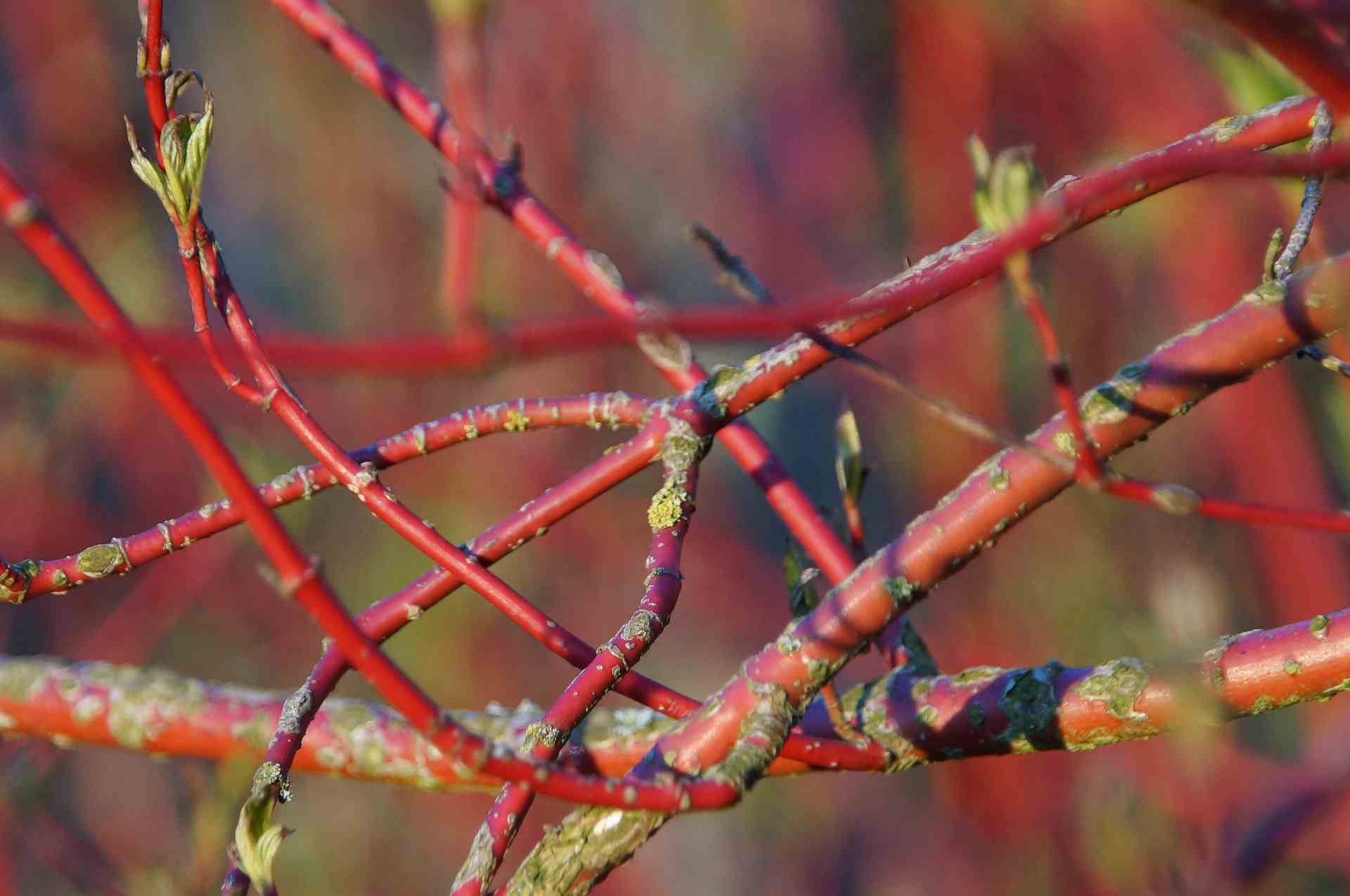
Discover other Coloured wood Dogwood
View all →Available in 0 sizes
Available in 3 sizes
Available in 2 sizes
Available in 1 sizes
Available in 2 sizes
Available in 2 sizes
Available in 3 sizes
Available in 3 sizes
Available in 2 sizes
Available in 3 sizes
How to prune effectively in a few steps?
The decorative dogwood is easy to prune. Simply equip yourself with a hedge trimmer, a branch cutter, or a pruning shear and follow these steps:
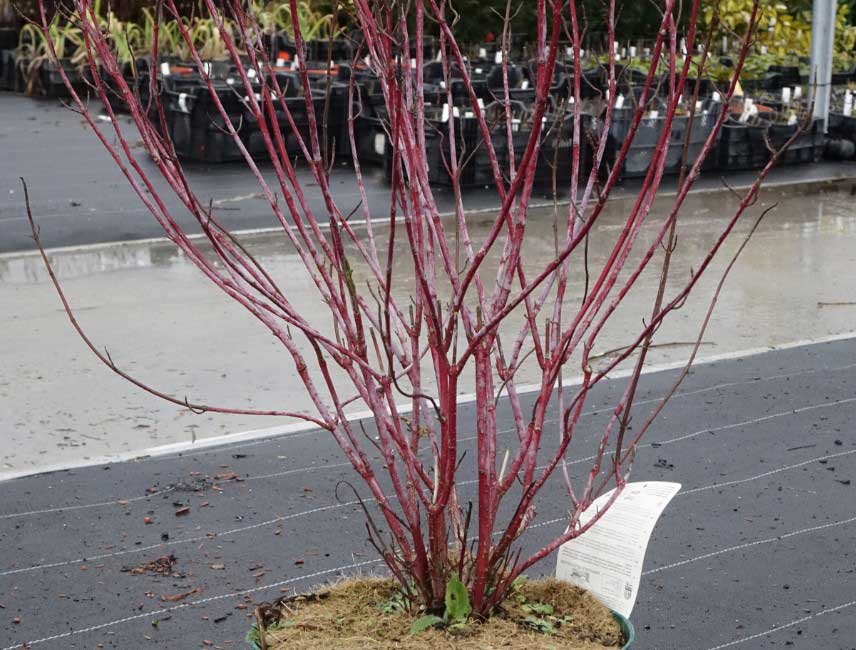
A potted dogwood ready to be pruned
- Prune the branches at a slight angle just above an eye (bud) facing outward to encourage harmonious growth.
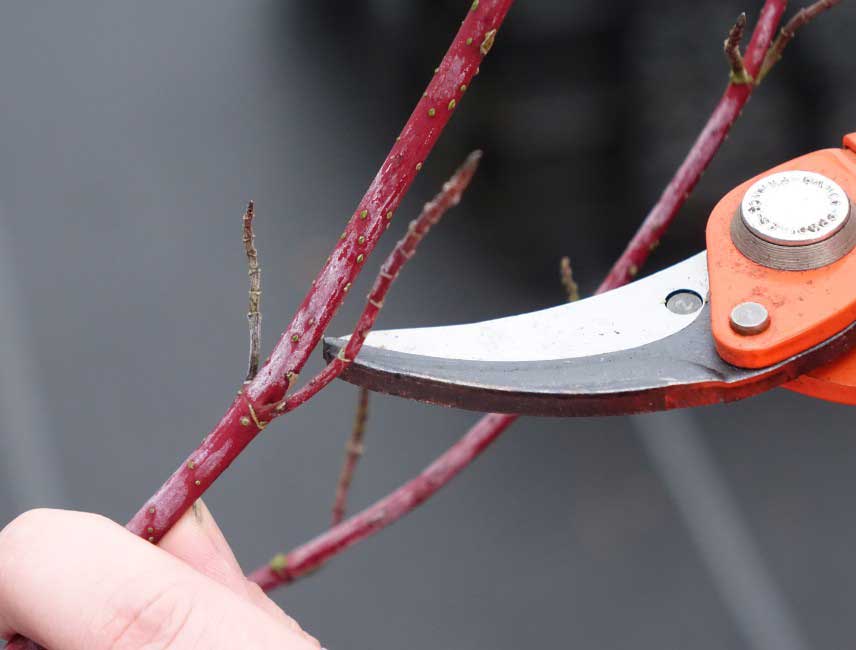
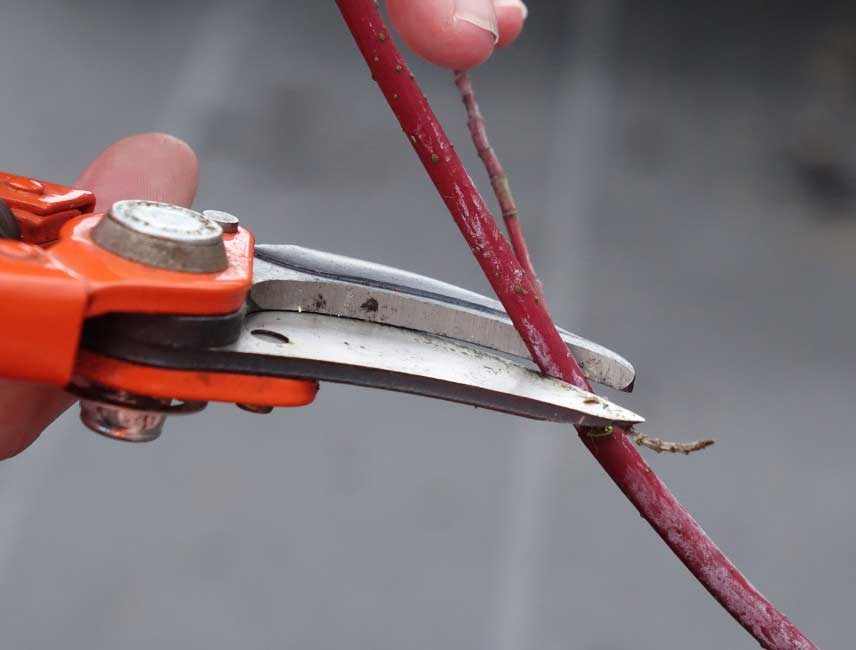
Using a pruning shear, make a clean angled cut just above an eye
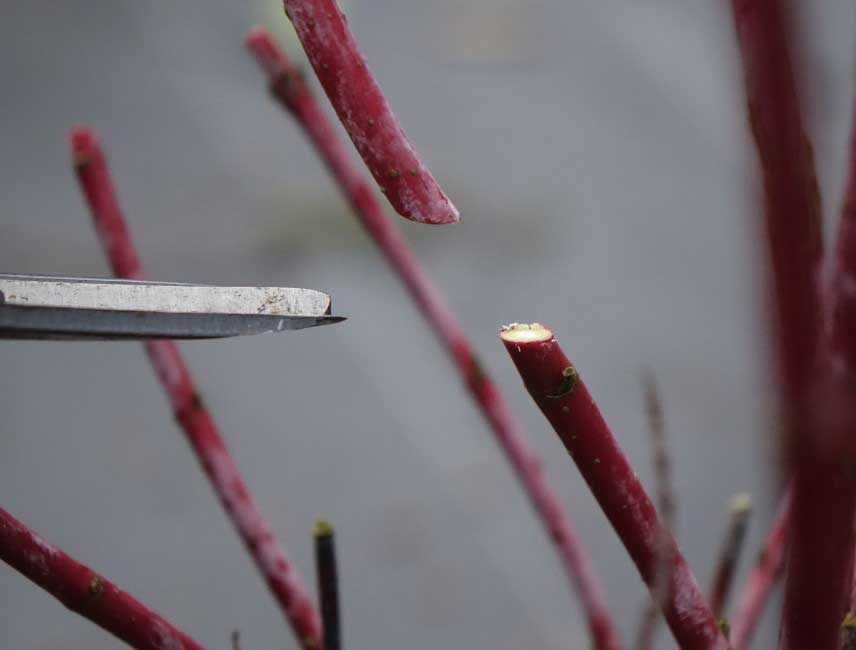
- To achieve a compact bush (about 1 m tall), cut the branches back to about 30 cm from the ground. This technique is ideal for showcasing the colourful young shoots.
- If you prefer a denser and bulkier bush, shorten only a third to half of the branches.
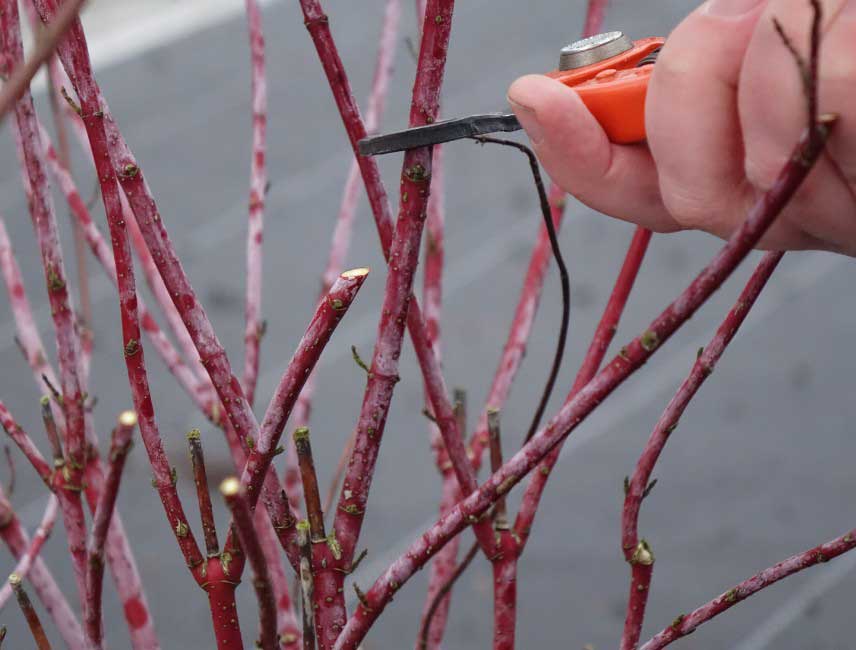
- Each year, remove about a third of the oldest, thickest, and least colourful branches to encourage new vigorous shoots. Leave the young stems intact without shortening them to optimise their colour.
- Remove dead wood at the base of the bush to maintain a healthy and airy plant.
- Spread a thick layer of compost at the base of the bush after pruning to promote regrowth and revitalise the plant.
Good to know: You can also cut the bush back completely to ground level. This severe pruning allows for very colourful shoots, but the bush will take about two years to regain its volume. This practice can also accelerate the ageing of the stump and create an unsightly temporary void. For large areas or mass plantings, such as on a slope, using a hedge trimmer is also an option for quicker maintenance.
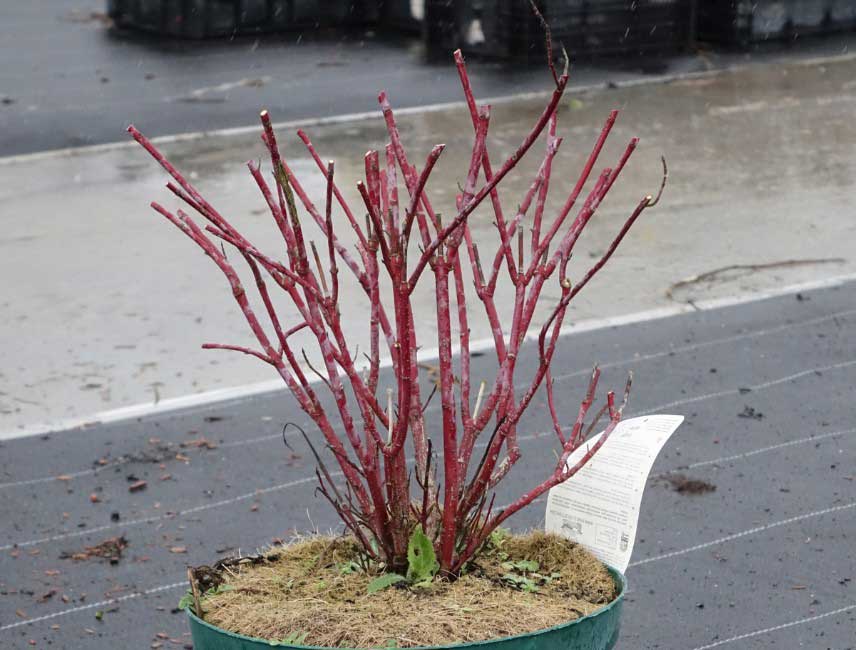
If you want a compact bush, you can cut the branches back to about 30 cm from the ground
To go further
- Discover our video on coloured wood Cornus!
- Our complete guide to everything you need to know about growing decorative dogwoods
- Our entire range of coloured wood dogwoods
- Subscribe!
- Contents

































